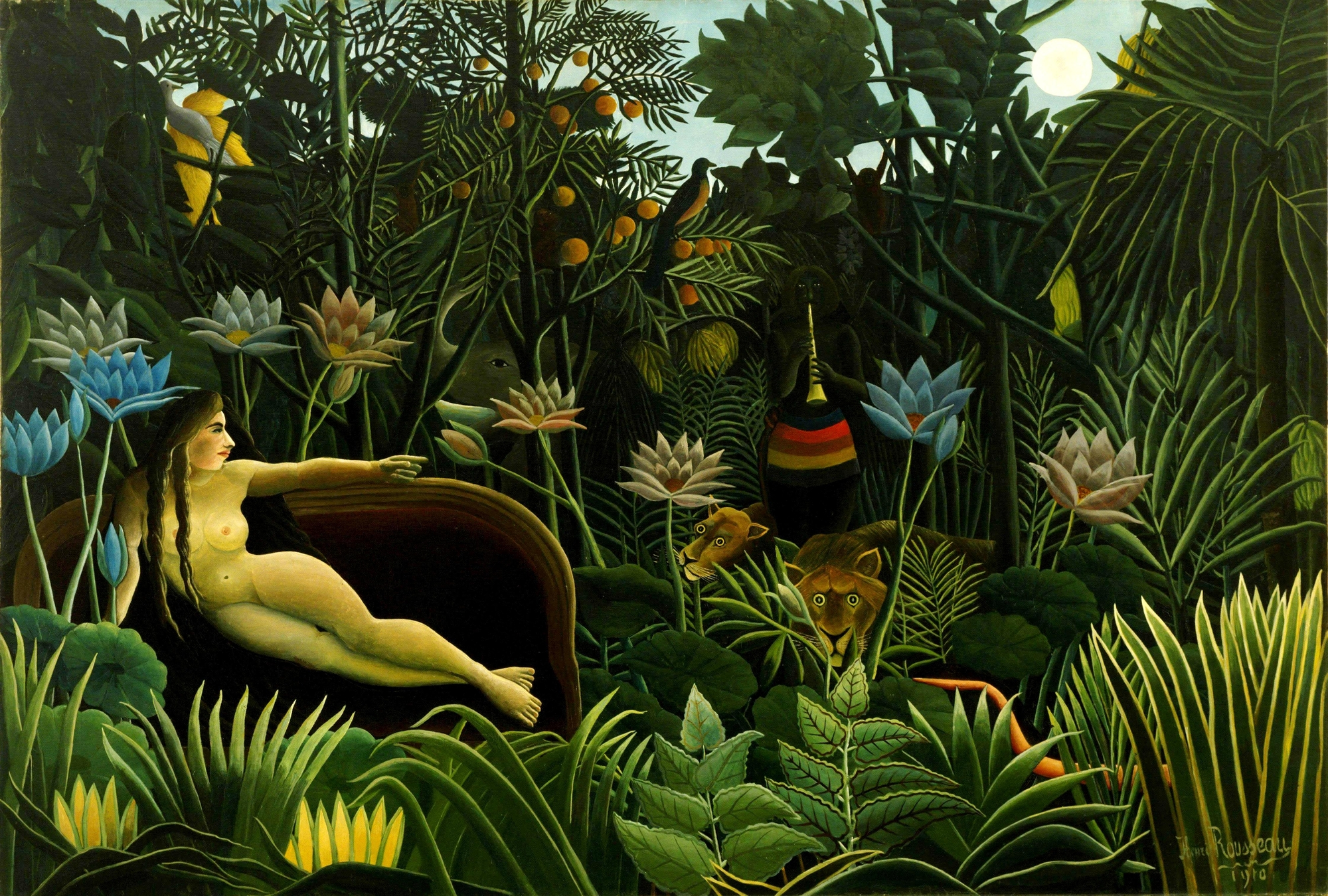The Dream
The Painting
The Dream (French: La Rêve, occasionally also known as Le Songe or Rêve Exotique) is a large oil-on-canvas painting created by Henri Rousseau in 1910, one of more than 25 Rousseau paintings with a jungle theme. His last completed work, it was first exhibited at the Salon des Indépendants from 18 March to 1 May 1910, a few months before his death on 2 September 1910.
Rousseau's earlier works had received a negative reception, but poet and critic Guillaume Apollinaire remarked on its debut: "The picture radiates beauty, that is indisputable. I believe nobody will laugh this year."
The stylised forms of the jungle plants are based on Rousseau's observations at the Paris Museum of Natural History and its Jardin des Plantes. The nude's left arm reaches towards the lions and a black snake charmer who faces the viewer playing his flute, barely visible in the gloom of the jungle under the dim light of the full moon.
The Artist
Henri Julien Félix Rousseau (May 21, 1844 – September 2, 1910) was a French Post-Impressionist painter in the Naïve or Primitive manner. He was also known as Le Douanier (the customs officer), a humorous description of his occupation as a toll collector. Ridiculed during his life, he came to be recognized as a self-taught genius whose works are of high artistic quality.
He was mediocre in some subjects at the high school but won prizes for drawing and music. He worked for a lawyer and studied law, but "attempted a small perjury and sought refuge in the army," serving for four years, starting in 1863. He started painting seriously in his early forties, and by age 49 he retired from his job to work on his art full-time.
Rousseau claimed he had "no teacher other than nature", although he admitted he had received "some advice" from two established Academic painters, Félix Auguste Clément and Jean-Léon Gérôme. Essentially he was self-taught and is considered to be a naïve or primitive painter.
